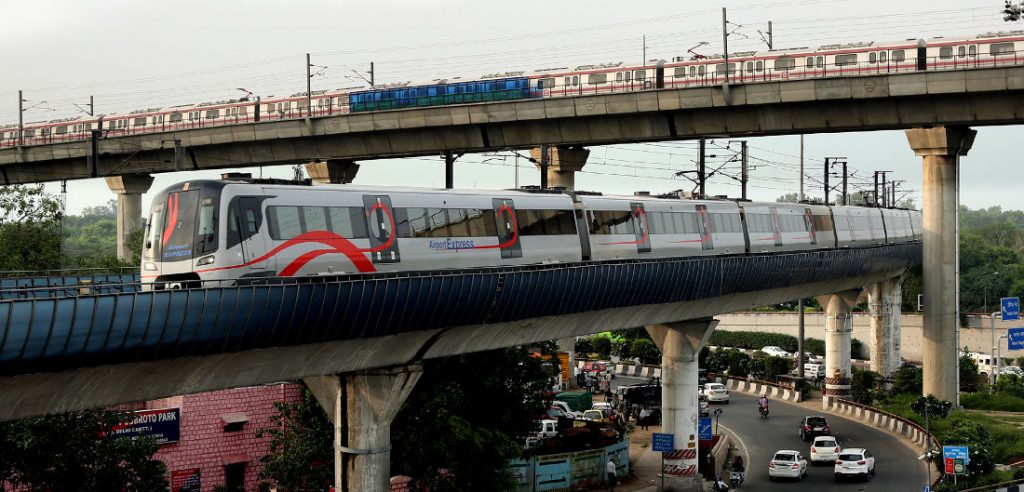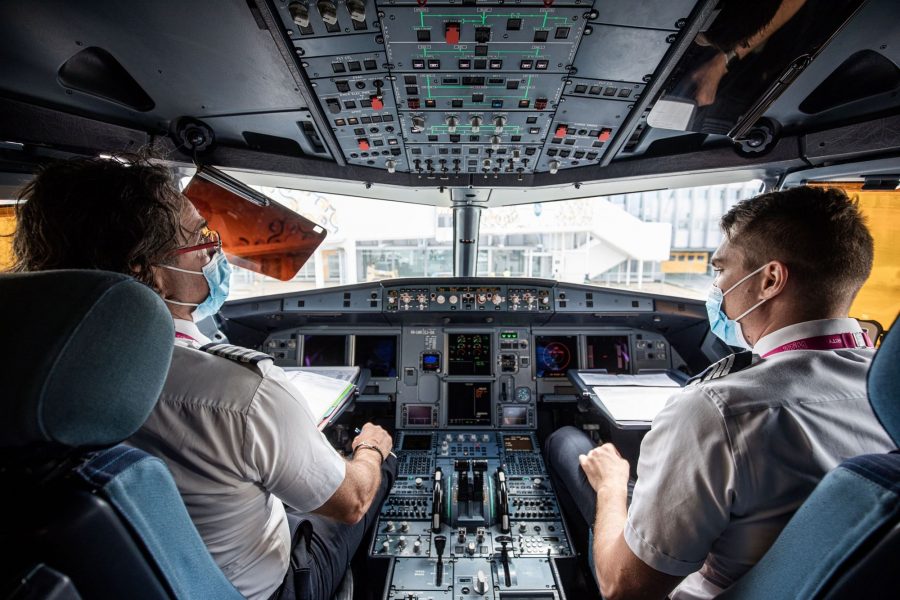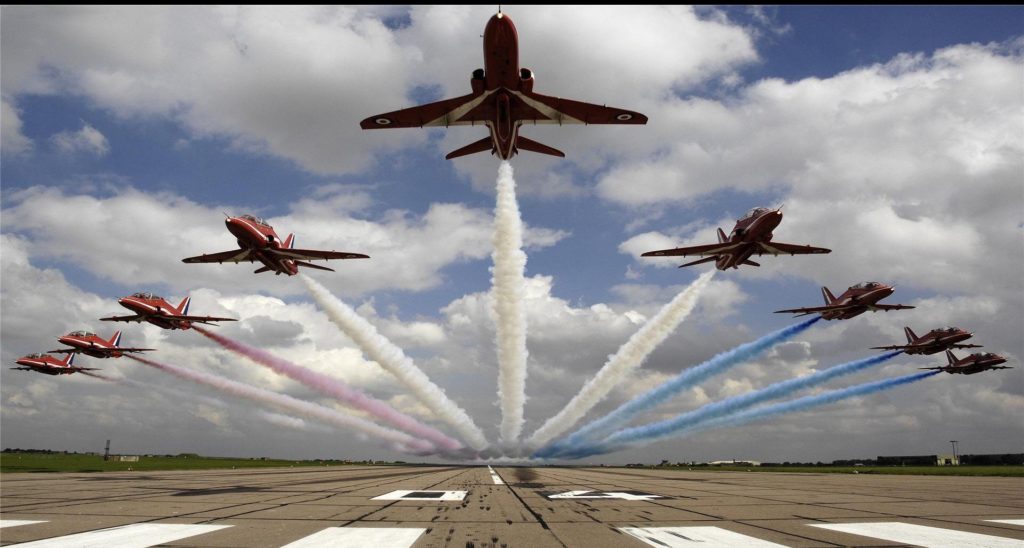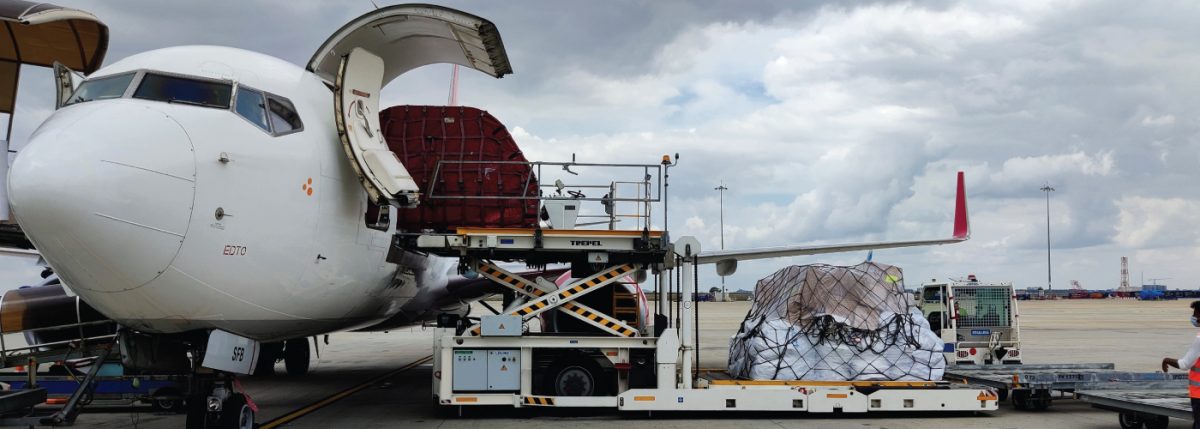Metro routes proposed between Noida Airport and Delhi's IGI Airport by DMRC
Radhika Bansal
17 Feb 2022

The Delhi Metro Rail Corporation (DMRC) has proposed a 72km high-speed corridor between the upcoming Noida airport in Jewar and Delhi’s IGI airport. The metro connectivity will be built in two phases and will have 13 stations in total between Jewar and New Delhi railway stations.
The corridor will then connect with Delhi’s Airport Express line to reach IGI. In a presentation to officials of the Yamuna Expressway Industrial Development Authority (YEIDA) on Monday, February 14 a DMRC team said the first phase — 35km long — will have both underground and elevated portions and will connect Knowledge Park 2 on the Aqua Line with the Noida airport.
Metro routes proposed between Noida Airport and Delhi's IGI Airport by DMRC
This independent corridor will have an interchange at Knowledge Park 2 and there will be seven stations between them. DMRC is likely to submit the detailed project report by March 31 and follow it up with a feasibility study of the second phase of the metro link.
The second phase, sources said, was likely to be around 37km long and would span from Knowledge Park 2 to New Delhi railway station. The route is likely to run parallel to the Noida expressway and will have stations at New Ashok Nagar and Yamuna Bank.
“On Tuesday, February 15 DMRC gave a presentation of their proposal to connect Noida airport with Delhi’s IGI. The entire corridor will be 72km long. The first phase will be built from Jewar to Knowledge Park 2 and the second from Knowledge Park 2 to New Delhi railway station. The DPR for the first phase is likely to be ready by March 31.” Arun Vir Singh, CEO, Yamuna Expressway Industrial Development Authority (YEIDA)
According to the sources, the 35km first phase of the corridor will cost around INR 5,000 crore. “There will be seven stations in the first phase. The tentative ones could be Techzone, Salarpur Underpass, and sectors 18 and 20 of the Yamuna Expressway apart from Noida airport and Knowledge Park 2. The final numbers will be known only when the DPR is ready,” a source said.
Trains on this route will hurtle down faster than on the usual metro lines and it could take around an hour to cover the distance between the two airports, with the interchanges in between.
Noida International Airport in Jewar is under construction and would be the largest in India on completion. It will also be the first airport with net-zero emissions. The airport is planned across 1,334 hectares at Jewar.
Strategically, the airport will be located 72km from Delhi IGI airport, 52km from Noida, 90km from Multi-modal Logistics Hub at Dadri and 130km from Agra. Prime Minister Narendra Modi laid the airport’s foundation stone in November 2021.
YEIDA is the implementation agency of the project in coordination with the Uttar Pradesh government. The project is progressing in four phases, and the first phase is expected to complete by September 2024.
Read next
As the pandemic drags on, a third of airline pilots are still unable to fly
Radhika Bansal
17 Feb 2022

Despite an improvement from the situation a year earlier when the majority of airline pilots were grounded, a new survey shows that more than a third of airline pilots are staying grounded as the pandemic continues to affect aviation globally.
FlightGlobal and UK-based GOOSE Recruitment surveyed more than 1700 pilots, which found that 62% were employed and currently flying, up from 43% a year earlier. With air traffic beginning to rebound after 2020's lows, the number of unemployed pilots decreased from 30% to 20%, while 6% of pilots were on furlough, compared with 17% previously.
As the pandemic drags on, a third of airline pilots are still unable to fly
As a result of tough border restrictions, international travel has dropped most in the Asia-Pacific region, and the unemployment rate has risen from 23% to 25%. 53% of workers in the region were employed as pilots.
"We have ... seen some expatriates return home from the region due to concerns over quarantine or being stuck for long periods away from friends and family," the report on the survey said. In the aftermath of the pandemic, Hong Kong's Cathay Pacific Airways has lost hundreds of pilots, including the closure of Cathay Dragon, a regional airline owned by the airline.
Among the pilots still flying internationally, 61% expressed concern about their job security.
There has also been a rise in pilot attrition at Cathay Pacific, thanks to strict layover rules that keep crews in hotels when they are not flying. Among the pilots still flying internationally, 61% expressed concern about their job security.
"It appears only Northern America is back to post-Covid passenger numbers," said an unnamed captain flying in the Middle East and Africa. "The rest of the world, especially developing nations, are still struggling to get vaccines, and are still not travelling."
(With Inputs from Reuters)
Read next
Aviation Ministry is in talks with home and health ministries on resuming regular international flights, said a news report on Wednesday, February 16.
The current ban on scheduled international flights, imposed due to Covid, is valid until February 28. The government is considering resuming international flights by March-April, reported CNBC TV-18. The report said the final decision on the resumption of regular international flights is yet to be taken.
The aviation ministry had earlier announced plans to resume regular international flights starting December 15, 2021, but rescinded that order due to the rise in Omicron cases.
Regular international flights are expected to resume by March-April
Domestic airlines operated more than 2,800 flights before the pandemic in 2020. On Sunday, February 13, they operated 2,058 flights and to reach 80% of the pre-Covid level, the number has to go over 2,200.
The scheduled international passenger flight ban has been in place in India since March 23, 2020. However, special passenger flights have been operating between India and approximately 40 countries since July 2020 under air bubble arrangements formed with them.
India currently has air transport bubbles with Afghanistan, Australia, Bahrain, Bangladesh, Bhutan, Canada, Ethiopia, Finland, France, Germany, Iraq, Japan, Kazakhstan, Kenya, Kuwait, Maldives, Mauritius, Nepal, Netherlands, Nigeria, Oman, Qatar, Russia, Rwanda, Saudi Arabia, Seychelles, Singapore, Sri Lanka, Switzerland, Tanzania, Ukraine, United Arab Emirates, United Kingdom, US and Uzbekistan.
India and 40 countries since July 2020 are operating flights under air bubble arrangements.
Last week, the Ministry of Health issued a statement and informed that besides uploading negative RT-PCR report (taken 72 hrs before journey), the option to upload the certificate of completing full primary vaccination schedule of COVID-19 vaccination provided from countries on a reciprocal basis.
“All travellers will self-monitor their health for the next 14 days of arrival. If travellers under self-health monitoring, develop signs and symptoms suggestive of COVID-19, they will immediately self-isolate and report to their nearest health facility or call National helpline number (1075)/ State Helpline Number," the ministry said.
Read next
The Indian MRCA competition - here's how the SAAB Gripen stacks up along with the other competitors
Prashant-prabhakar
17 Feb 2022

The Medium Multi-Role Combat Aircraft (MMRCA) competition of India, also known as the MRCA tender, is a competition to supply 126 multi-role combat aircraft to the Indian Air Force(IAF).
In April 2019, the IAF had issued an RFI (Request for Information) for the procurement of 114 fighter jets at a cost of around USD 18 billion - which was touted to be one of the world's biggest military procurement programmes at the time. The acquisition of these jets came at a time when the older fleets of Jaguar, Mirage and the MiG 29 were slowly being phased out as they approached the end of their operational life.
Indian Air Force Jaguar | The National Interest
The Indian Airforce plans to attain a 42 squadron strength by 2035 and deploy 450 fighter jets each along the borders of Pakistan and China. Additionally, many more stealthy autonomous UCAVs (DRDO AURA), swarm drones (ALFA-S) and unmanned aircraft would join the team to transform into a fully advanced Network-Centric Force capable of sustained multi-role operations.
The Lockheed Martin F-21, Boeing's F/A-18, Dassault Aviation's Rafale, the Eurofighter Typhoon, Russian aircraft MiG 35 and Saab's Gripen are the top competitors fighting for the ultimate gold.
Given the line-up of competitors and the current fleet structure, how does Gripen have the edge in the IAF’s hunt for a fighter?
The SAAB Gripen
Wikipedia
The Saab JAS 39 Gripen is a light single-engine multirole fighter aircraft manufactured by the Swedish aerospace and defence company SAAB AB. The Gripen has a delta wing and canard configuration with a relaxed stability design and fly-by-wire flight controls. Later aircraft are fully NATO interoperable.
Gripen is the world's latest designed and the most modern fighter. But besides its leading multirole and netcentric warfare capabilities – where you can do more with fewer aircraft-what really differs is that with the same fleet size – with Gripen – you will have twice the number of airborne fighters and airtime at half the cost, compared to contemporary fighters.Kent-Åke Molin, Sales and Marketing Director, Saab
Kent-Åke Molin | Saab
How does it fit the bill considering India's scenario?
While contemporary fighters are designed that rely on large fleets and limitless resources, ensuring there are enough aircraft in the air when required. Gripen is designed and tailored for nations that need to operate assets independently during long periods of conflicts against adversaries with perhaps even larger fleet size and really advanced combat systems.
EurAsian Times
In my view, that also summarises India's challenges. What distinguishes Gripen from other fighters is that it is designed from the start with these challenges in mindsays Kent-Åke
The key to air dominance, Kent emphasizes, is demonstrable deterrence in air. India shares borders with six countries, each with different terrain and temperature profile. Consequently, the Indian Army needs for surveillance systems on these different border areas are also hugely varied.
Representative | Design World
The highly contested battlespace of today necessitates a superior electronic warfare capability. The Indian Air Force as well can benefit from a new generation EW solution that gives the pilots an armour of information advantage. A non-negotiable for an effective EW system is its ability to understand radio frequency emitter signals, no matter how many they are, and draw quick conclusions. The result is superior situational awareness that helps the pilot to see first and act first. Modern air forces like the IAF need this game-changing capability to ensure mission success. If India requires, Saab is willing to share its know-how of the GaN ( Gallium Nitride) technology not just for the Gripen programme, but also for ongoing and future indigenous programmes such as the LCA and AMCA.Kent-Åke
HAL AMCA | AeroTime Hub
The other element is a high level of preparedness to counter consistent efforts to probe air defence systems. To Counter surge attacks and sustain high tempo attacks over extended periods, the IAF would have to demonstrate the power and ability to fight attritional warfare against an enemy with large resources.
SAAB JAS 39 Gripen crew loadout | representative | Reddit
With Gripen, India will have the ultimate warhorse but also the workhorse that stays in the air, patrols India’s vast borders 24/7, is resilient to meet surge attacks as well as fight and win attritional warfare scenarios over long periods of conflict. Kent-Ake
What makes the Gripen different from other competitors of its class?
The Gripen features very reliable systems and foolproof equipment that apparently, fail rarely. What that means is the fighter can be deployed for decentralized operations from the temporary base(s), thereby bringing ease and speed to maintenance activities, slashing logistical costs, minimising turnaround time and more.
SAAB JAS Gripen 39E cockpit | Reddit
Having almost 100% of the fighters mission-ready on the tarmac should not be a problem for any platform. But what happens when you start flying, sortie after sortie in high-tempo operations during longer periods? With less maintainable and reliable, heavy, twin engine configurations you will rapidly start exhausting your resources of fuel, spares and manpower. The higher failure rates that inevitably come with the more installed equipment will soon get them grounded. Kent-Ake
The inherent design is another factor that works to the Gripen's advantage. The system architecture has a clear distinction between tactical and flight-critical features with individual layers in between, ensuring the software and hardware work independently without overlapping. This feature has additional benefits in that tactical updates are now made easier, cheaper and quicker as opposed to the general norm of updating software which generally takes ages.
Ola Rignell, Chairman and Managing Director, Saab India | Representative | Saab
This one feature is what would keep Gripen way ahead of its peers, even in the years to come.
Getting your hands on this fighter craft means you now get the opportunity to embrace new, cutting edge technology while at the same time, also developing new tactics constantly, thereby ensuring your enemies are five steps behind at all times.
The Swedish aerospace company has pitched the Gripen fighter aircraft to India, reportedly, at " half the price paid for Rafale". Priced at 125 Mn, the Gripen is now pitted against the 216 Mn Euro Rafale. Saab expects India to launch a global tender in the “first half of this year”.
SOURCE(s)
COVER: AamJanata
Read next
FAA to evaluate new Boeing 787 Dreamliners, says Boeing can't self-certify
Radhika Bansal
16 Feb 2022

The U.S. Federal Aviation Administration (FAA) on Tuesday, February 15 said it would perform final inspections on new Boeing 787 Dreamliner aircraft, and will not allow the planemaker to self-certify the jets.
The U.S. aviation regulator said it notified Boeing of the decision that it will retain the authority to issue airworthiness certificates until it is confident "Boeing’s quality control and manufacturing processes consistently produce 787s that meet FAA design standards."
Boeing said it "will continue to work transparently through (the FAA's) detailed and rigorous processes... We will continue to engage with the FAA to ensure we meet their expectations and all applicable requirements."
Boeing said it will continue to work transparently through (the FAA's) detailed and rigorous process
Boeing suspended deliveries of the 787 in late May after the FAA raised concerns about its proposed inspection method. The FAA had issued two airworthiness directives to address production issues for in-service airplanes and identified a new issue in July.
Deliveries have remained halted as U.S. regulators reviewed repairs and inspections. Deliveries are expected to remain frozen months longer.
The FAA said it wants Boeing to ensure it "has a robust plan for the re-work that it must perform on a large volume of new 787s in storage" and that "Boeing’s delivery processes are stable."
FAA to evaluate new Boeing 787 Dreamliners as they can't be self-certify
House Transportation and Infrastructure Committee chair Peter DeFazio praised the FAA for "taking much-needed steps to ensure the safety of the flying public." He noted the committee has been investigating the production and manufacture of the 787.
The 787 program remains at a low production rate, with an expected gradual return to five per month over time, Boeing said.
Boeing disclosed a USD 3.5 billion charge due to delivery delays and customer concessions, and another USD 1 billion in abnormal production costs, related to production flaws and related repairs and inspections on the advanced composite jet.
Boeing disclosed a USD 3.5 billion charge due to delivery delays and customer concessions
The FAA previously retained the right to issue certifications for the first four Boeing 787s when the company briefly resumed deliveries in early 2021. Boeing shares rose 3.7% on Tuesday, February 15.
Factory changes and other requirements to overcome tiny structural blemishes have raised longer-term questions over Boeing's ability to build 787s at a sufficiently low cost and the rates once planned, a person familiar with the matter said.
(With Inputs from Reuters)
Read next
Rose shipments to Bengaluru airport nearly doubled in the run-up to Valentine's Day
Radhika Bansal
16 Feb 2022

The Kempegowda International Airport in Bengaluru on Monday, February 14 stated that airport cargo witnessed a nearly two-fold increase in rose shipments in the run-up to Valentine’s Day this year.
The airport facilitated the movement of approximately 5.15 lakh kg of roses to 25 international and domestic destinations this year, compared to 2.7 lakh kg shipped in 2021. The demand for roses in the domestic market during Valentine’s season has seen a considerable rise this year.
Rose shipments to Bengaluru airport nearly doubled in the run-up to Valentine's Day
“Domestic shipments have witnessed a significant improvement, has increased to 3.15 lakh kg (6.5 million stems) vs 1.03 lakh kg in 2021, recording over 200 per cent growth. Around 2 lakh kg (7.3 million stems) were exported to international destinations this year vs last year’s 1.7 lakh kg,” a statement from the airport read.
“Bengaluru is the biggest exporter of roses in India. At the Bengaluru airport, we take pride in becoming a channel to aid the local community, growers and shippers by facilitating the shipment of their products while maintaining freshness. Our cargo infrastructure, powered by technology, provides rapid distribution of perishable cargo, making the airport the preferred cargo airport in south India. We will continue to work with our cargo partners to introduce new initiatives and facilities that cater to constantly evolving demand.” Satyaki Raghunath, Chief Strategy & Development Officer, Kempegowda International Airport, Bengaluru
The top domestic destinations for roses include Delhi, Mumbai, Kolkata, Guwahati and Chandigarh. Among the top international destinations are Singapore, Kuala Lumpur, London, Amsterdam, Kuwait, Auckland, Beirut, Manila, Muscat and Dubai.
Bengaluru airport accounts for 31% of India’s total perishable shipments and, according to the Agricultural and Processed Food Products Export Development Authority’s (APEDA) data for FY 2020-21, it is the number one airport for flower exports in the country.
Green Building Accreditation Inc. (GBCI), the leading authority on sustainability in building design, construction, and operations, has granted Bangalore International Airport Limited (BIAL) the renowned PEER (Performance Excellence in Electricity Renewal) platinum certification.
The airport power infrastructure achieved a score of 92/100. The LEED green building programme is administered by the GBCI, which is one of the world’s major sustainability and health certification and credentialing bodies.


Comment